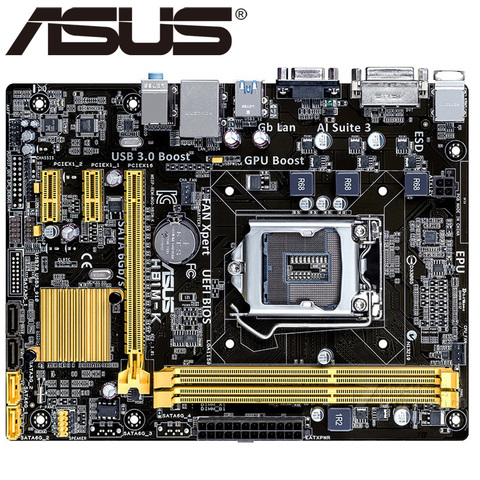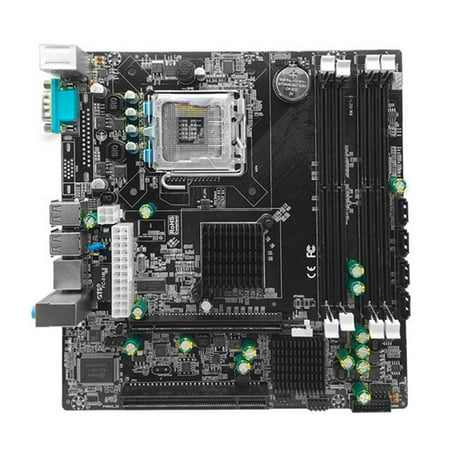Intended Uses All Intel desktop boards are evaluated as Information Technology Equipment (I.T.E.) for use in personal computers (PC) for installation in homes, offices, schools, computer rooms,. TOPSKY 59' Big Large Computer Office Desk 1.88 Thickness Desktop/1.18” Board + 0.7” Frame (Rustic Brown) 4.8 out of 5 stars 526. Developed based on the Huawei Kunpeng 920 processor, the Kunpeng desktop board is compatible with mainstream hardware such as memory, hard drives, and network interface cards (NICs). It supports the Linux desktop operating system and provides reference design for chassis, heat dissipation, and power supply. The Kunpeng desktop board features high performance, rich interfaces, high reliability. Intel Desktop Board DP67BG - Extreme Series - motherboard - ATX - LGA1155 Socket - P67 overview and full product specs on CNET. The main printed circuit board in a complex electronic device, such as a personal computer, usually containing the central processing unit, the main system memory, and other components essential to the device's operation. American Heritage® Dictionary of the English Language, Fifth Edition.
Introduction: Desktop Game Board and Pieces
I don't know much about desktop games and role-playing games, but I know my way around tinkercad and I am hoping to help people learn about 3D molding. This board is modular, so you can add any piece you would like because I am likely to leave out pretty important pieces. This is both a guide and an idea to expand upon for beginners, and if you have some experience with 3d modeling I would suggest looking on Thingiverse or a similar website to make your own pieces.
If you are not interested in learning tinkercad or if you already know tinkercad, a link to the models is on the last step.
This is a guide to make:
- 4 piece board
- a floor piece
- a treasure piece
- a corner wall piece
- a door piece
- a wall piece
Supplies:
- Computer
- Tinkercad account
Optional:
- 3D printer
- paint
Step 1: Start the Board
To start the board, you want to click and drag the cube shape onto the work plane. By dragging the small boxes around the cube you can resize the box to the shape you want. Keep in mind that this is only a quarter of the total board, so I chose to make it 145mm by 145mm and 15mm tall. If you are going to 3D print this, I would suggest scaling your parts to the size you want in your slicer program.
Step 2: Add a Pyramid

Next, drag a pyramid shape next to the box. This time rescale it to be 60mm high and 40mm by 40mm at the bottom. Then, drag another square next to the pyramid and resize it to be larger than the pyramid. Click and drag the triangle above the square. This should lift the square of the build plain. I pulled it 10mm off the build plane. Finally up in the top right there should be a box showing solid or hole. you should click on the circle above hole. this will cause it to become see-through.
Step 3: Group Together the Square and Pyramid
Once you have the square and pyramid you want to click and drag through the pyramid and square to select them. Make sure that you don't select the mainboard though. Then, in the top right, there should be a button that looks like an arrow. You want to click that and, when you do, the square should disappear and the part of the pyramid that was in the square should have disappeared also. Then select the shape you just made and drag the rotation arrows till the smaller side of the shape is on the bottom.

Step 4:
Lift the shape 5mm above the work plain so the top of the shape is level with the mainboard, then drag the shape to one of the corners of the board. Next, select the pyramid, and change the shape to a hole. Then press ctrl+c and then ctrl+v to copy and paste the pyramid. After that, move the copies evenly into a 9 by 9 grid and, after selecting the shapes, click 'group' and the board should be completed.
Step 5: Bonus: Designing Pieces for Your New Board
Step 6: The First Piece
In a new work plane, you should be able to paste your upside-down pyramid. This will act as a module to the board it will fit into the slots and allow you to build the scene.
Step 7: Add a Wall
If you look above all of the shapes in the menu there's a dropdown labeled basic shapes, if you click on this you can get to more advanced shapes, many of which are fun to play around with but, at the moment, you want to click on 'all' under shape generators. Once you do this you should see a lot of weird shapes and, if you scroll down, you will come across two brick wall shapes. I chose to use the smaller one, but you can choose which one you want. You want to rescale your wall to be about 39mm in length (you don't have to change the width). I changed some of the settings in the box in the top right to get the shape and style wanted. You can play with these settings till you have the wall you want.
Step 8: Add a Support to Your Wall
After you have the wall you want, change back to basic shapes in the dropdown menu and grab a cube, this will hold the bricks in place because, at the moment, some of them are floating in mid-air and will not be able to 3D print. Just resize it to be about 35mm by 5mm and just shorter than the top of your wall. You want to group the wall and support but not yet to the base.
Step 9: Make a Corner Wall

Ok, I confess, I forgot to take pictures for this part. But this is one of the most simple of the pieces, you want to copy and paste the base, then copy and paste the wall twice. One wall you want to rotate 90 degrees to create the corner. Group the shapes and then move them above the second base.
Step 10: Create a Door
This is the hardest of the pieces, start by duplicating the first wall segment we made and move that off to the side. Then add two cubes and resize them to be about 2mm by 2mm by 15mm. Add a semicircle above the two cubes and rescale it to also be 2mm tall to create a doorway. If you want, you can add a semicircle hole and resize it to fit inside the first semicircle to creat an arch. Group all of these shapes
Step 11: Move the Doorway to the Duplicated Wall
Rotate your doorway so it's standing straight up and move it so it fits on the wall.
Step 12: Make the Door
Going back to the dropdown menu, navigate to 'making at home' and drag 4 popsicle sticks to the work plain. move them about 1-2mm apart in a square, group these and, if you want, change the color to brown.
Step 13: Add a Door to You Doorway
After grouping your popsicle sticks, rotate them so they are vertical and move them into your doorframe. Make sure that there is not any popsicle stick sticking out, and then remove any extra with a cube set to hole.
Step 14: Add Some Treasure!
This is one of the most simple of the pieces. By resizing a cube and a semicircle, you can create a chest-looking object. Drag and then elevate this onto another base piece and you now have a simple chest piece.
Step 15: The Easiest Step: the Floor Piece.
this piece is simply just a base piece but if you want you can add flooring to it.
Step 16: The End!
This was only meant to be a beginning and tutorial to tinkercad, and many hundreds of pieces could be made for DnD or any tabletop game. This was designed to be modular and very easy to customize, and due to the board layout, you can have as large of a board as you want.
here are some helpful links to 3D model websites:

Attachments
- foor piece.stl
- corner piece.stl
- Game board.stl
This is an entry in the
Role Playing Game Challenge
Be the First to Share
Recommendations

STEM Contest
Role Playing Game Challenge
CNC Contest
Also found in: Dictionary.
desktop board
A motherboard designed for a desktop computer rather than a laptop. Desktop computers are often housed in a tower case. See motherboard and tower case.Desktop Board Dh77kc
Desktop Board Dh61dl
Want to thank TFD for its existence? Tell a friend about us, add a link to this page, or visit the webmaster's page for free fun content.Link to this page:
Desktop Board App
Desktop Board Dg31pr
